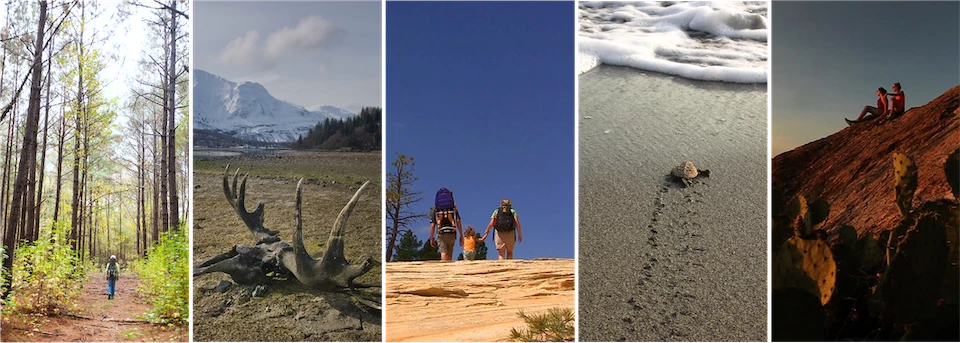There are five 'categories' of NPS wilderness: eligible, proposed, recommended, designated, and potential wilderness. National park lands that meet the basic criteria for possible wilderness designation typically go through a multi-step process for more thorough consideration. Each step in the process represents a different category of NPS wilderness that is supported by NPS policy and/or law.

NPS
Eligible Wilderness
For this category, the NPS has determined through a Wilderness Eligibility Assessment that some or all of the national park possesses the qualities and character, as identified within the Wilderness Act, which would qualify it for possible future designation within the National Wilderness Preservation System. Eligible wilderness is not designated wilderness, and is managed to preserve its wilderness character according to NPS policy rather than the Wilderness Act, a federal law.
Proposed Wilderness
For this category, the NPS has completed a formal wilderness study to further evaluate eligible wilderness lands. The study’s findings and conclusions are submitted as the NPS proposal for wilderness by to the Director to the Department of Interior. Proposed wilderness is not designated wilderness, and is managed to preserve its wilderness character according to NPS policy rather than the Wilderness Act, a federal law.
Recommended Wilderness
For this category, an eligible wilderness area that has been studied and proposed by the NPS is recommended for wilderness designation by the Department of the Interior to the President. This is then transmitted by the President as their recommendation for wilderness designation to Congress. Recommended wilderness is not designated wilderness, and is managed to preserve its wilderness character according to NPS policy rather than the Wilderness Act, a federal law.
Designated Wilderness
For this category, Congress has designated some or all of the national park as wilderness and a component of the National Wilderness Preservation System. The NPS is required to manage the wilderness area according to the Wilderness Act, a federal law, and NPS policy. Both law and policy emphasize the requirement to preserve the area’s wilderness character.
Potential Wilderness
For this category, there are lands which meet many of the criteria for wilderness designation but contain temporary non-conforming or incompatible conditions (i.e., structures or roads) or uses (i.e., inholdings or valid mining claims/operations) which prevent their immediate wilderness designation. These lands may be identified as potential wilderness in NPS wilderness proposals, wilderness recommendations, and by Congress in legislation designating other portions of a park as wilderness. Designated potential wilderness should be converted to designated wilderness once the non-conforming uses have been removed or eliminated. Potential wilderness is not designated wilderness, and is managed to preserve its wilderness character according to NPS policy rather than the Wilderness Act, a federal law.
Last updated: August 2, 2023
